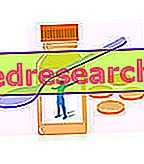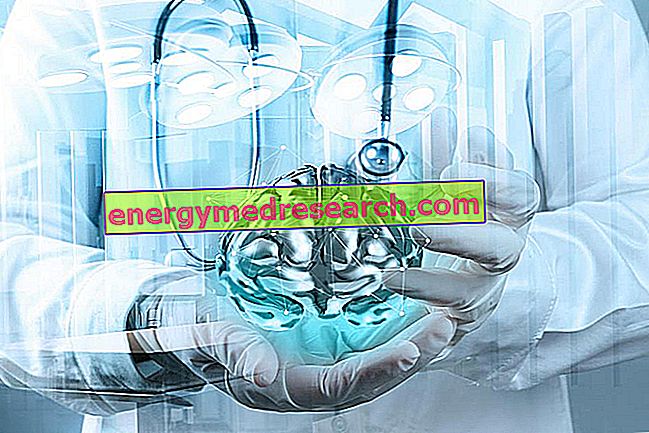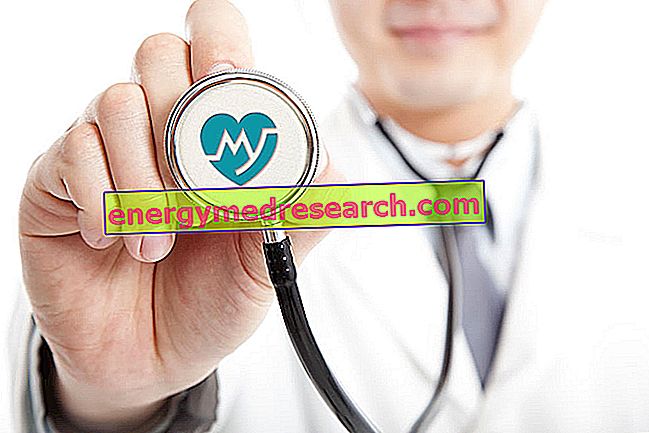Introduction
Prostaglandins are molecules of natural origin normally produced by the body.

In detail, these are derivatives of polyunsaturated fatty acids that are synthesized in many tissues of the body and covering different functions within it.
Despite being implicated in numerous physiological processes, the most known role of prostaglandins is most likely the one they play in inflammatory processes .
The intuition of the existence of prostaglandins dates back to the 1930s following studies carried out on human seminal fluid. However, the description of the first prostaglandin occurred a long time later, in the early 1960s. From that moment on, research in this area intensified, numerous other prostaglandins were discovered and their roles within the organism were defined.
Moreover, some prostaglandins have been created analogues and derivatives that are used in the therapeutic field for the treatment of different conditions (for example, induction of childbirth, treatment of erectile dysfunction, etc.).
What are
What are prostaglandins?
Prostaglandins are molecules naturally produced by the body involved in numerous physiological and non- physiological functions (inflammatory processes). In detail, these are products derived from polyunsaturated fatty acids and belonging to the eicosanoid group (together with lipoxins, thromboxanes and leukotrienes).
The prostaglandins are produced by different cells and each of them can produce prostaglandins of different varieties and quantities.
Nomenclature
Outline of Nomenclature and General Chemical Structure of Prostaglandins
There are many types of prostaglandins produced by the body currently known. They are indicated with the abbreviation " PG " (ProstaGlandine) followed by a capital letter from A to I: PGA, PGB, PGC, PGD, PGE, PGF, PGG, PGH and PGI.
Did you know that ...
- The prostaglandins I - therefore, the PGI - are better known as " prostacyclines ". Often, they are considered as a group of eicosanoids in their own right.
- The prostaglandins of the G and H series ( PGG and PGH ), on the other hand, are considered as intermediates in the synthesis of other prostaglandins . Furthermore, according to the enzyme that acts on them, PGHs can give rise - in addition to other prostaglandins A, B, C, D, E and F - to prostacyclines (PGI) and to thromboxanes (TX).
The general chemical structure of natural prostaglandins is the one illustrated in the figure below; as can be seen, it is characterized by the presence of a cyclopentanic ring ; while a hydroxyl group is usually bound to carbon 15 (C-15).

The different series (A, B, C, D, E, F, G, H and I) of prostaglandins differ from each other by the type and stereochemistry of the substituents present at positions 9 and 11 . For example: the prostaglandins of the E series (PGE) have a carbonyl group in position 9 and a hydroxyl group bound to carbon 11; the prostaglandins of the F series have hydroxyl groups bonded to the carbons both in position 9 and in position 11; the prostaglandins of the D series, on the other hand, have a hydroxyl group bonded to carbon 9 and a carbonyl group in position 11; etc.

The prostaglandins of the G and H series ( PGG and PGH ), instead - which we remember to be intermediate for the synthesis of the other prostaglandins - are cyclo-endoperoxides .
Chemical structure of prostaglandins and double bonds
In natural prostaglandins the double bond between carbon 13 (C-13) and carbon 14 (C-14) is always present . However, depending on the polyunsaturated fatty acid from which the PGs derive, it is possible that there is the presence of further double bonds. More precisely:
- Prostaglandins having a double bond (present between C-13 and C-14) derive from 8, 11, 14-eicosatrienoic acid .
- Prostaglandins having two double bonds (one between C-13 and C-14 and one between C-5 and C-6) derive from arachidonic acid (or 5, 8, 11, 14-eicosatetraenoic acid).
- The prostaglandins having three double bonds (one between C-13 and C-14; one between C-5 and C-6 and one ago C- 17 and C-18) derive from the acid 5, 8, 11, 14, 17 -eicosapentaenoico (EPA).
The double bonds present in the prostaglandin are indicated with a number next to the letter representing the series; for example: PGE1 indicates a prostaglandin of the E series with a double bond; PGE2 indicates a prostaglandin of the E series with two double bonds; PGE3 indicates a prostaglandin of the E series with three double bonds.
Cis and trans isomerism
We conclude the hints on the nomenclature of prostaglandins remembering that the presence of a Greek letter next to the number of bonds present in the prostaglandin structure indicates the position of the possible hydroxyl group bound to C-9 (carbon 9) with respect to the possible hydroxyl group linked to C-11 (carbon 11).
More in detail, the hydroxyl group bound to C-9 may be in the cis position - in this case it will be indicated with the Greek letter α - or in the trans position - in this case the Greek letter β - on the bound hydroxyl group will be indicated to the C-11.

For example: PGF2α indicates the prostaglandin belonging to the F series with two double bonds (therefore deriving from arachidonic acid) having the hydroxyl group bound to carbon 9 in cis position with respect to the carbon alloy hydroxyl group 11.
Synthesis
How are Prostaglandins produced?
Prostaglandins are synthesized from polyunsaturated fatty acids listed in the previous paragraph. As mentioned, depending on the fatty acid from which the synthesis starts, the resulting prostaglandins may have one, two or three double bonds within their chemical structure.
In humans, prostaglandins deriving from arachidonic acid (hence, prostaglandins having two double woods within their structure) play a predominant biological role.
For this reason, we will consider the process of prostaglandin synthesis starting from arachidonic acid which, for simplicity, will be summarized in the following main points:
- Arachidonic acid is found inside the phospholipid membranes in esterified form. By the action of phospholipase A2 from the esterified form the true arachidonic acid is obtained.
- The arachidonic acid thus released can undertake different synthetic routes:
- The cyclooxygenase pathway (or cyclic pathway) that leads to the synthesis of prostaglandins and thromboxanes;
- The lipoxygenase pathway (or linear pathway) leading to the synthesis of leukotrienes.
- By the action of the cyclooxygenase enzyme (COX), the cyclic endoperoxide PGG2 (prostaglandin G2) is obtained from arachidonic acid and, subsequently, with the peroxidase action, the cyclic endoperoxide PGH2 (prostaglandin H2).
- From PGH2 it is possible to obtain:
- Prostaglandin E2 (PGE2) by the action of PGE isomerase.
- Prostaglandin F2α (PGF2α) by the action of prostaglandin-F synthase.
- Prostaglandin D2 (PGD2) by the action of another isomerase.
- Prostaglandin I2 (PGI2) - better known as prostacyclin - by the action of prostacyclin synthase.
- Thromboxane A2 (TXA2) due to the action of thromboxane synthase.
Deepening: Cycloxygenase enzyme
There are three different isoforms of the cyclooxygenase enzyme: COX-1, COX-2 and COX-3. Leaving aside the COX-3 whose functions inside the body do not yet seem to be fully understood; COX-1 is the constitutive isoform normally expressed in cells and involved in cellular homeostasis, therefore involved in physiological processes; in contrast, COX-2 is an inducible isoform that is activated in the presence of tissue damage and leads to the synthesis of pro-inflammatory prostaglandins .

Functions
What Functions Do Prostaglandins Do?
Prostaglandins are implicated in the performance of various physiological functions, as they are implicated in pathological processes (inflammation).
In physiological conditions, therefore in the absence of inflammatory states, prostaglandins perform many important functions for the body:
- They are implicated in the regulation of vasodilation (PGE2 and PGI2) and of vasoconstriction (PGF2α);
- They are implicated in the regulation of platelet aggregation (PGI2 inhibits it);
- They regulate bronchodilation (PGE2) and bronchoconstriction (PGF2α);
- They exert a cytoprotective action against the gastrointestinal mucosa;
- They are implicated in the maintenance of renal function ;
- In women, they stimulate uterine contraction (PGE2 and PGF2α) and act on the corpus luteum regulating the production of progesterone (PGE2 increases production, PGF2α inhibits it).
As can be seen, prostaglandins carry out various activities, sometimes opposite to each other, but which allow to maintain homeostasis inside the body.
Role of prostaglandins in inflammation
Prostaglandins are not only involved in the body's homeostatic functions, but also come into play during inflammatory processes. Indeed, in similar situations the pro-inflammatory prostaglandins deriving from the action of COX-2 on arachidonic acid:
- Induce vasodilation by increasing the vascular permeability;
- Promote the appearance of edema ;
- The pain threshold decreases through the sensitization of nociceptors (pain receptors) to inflammatory mediators (prostaglandins, in fact, are not the only molecules to participate in the so-called inflammatory response);
- They favor the increase in body temperature (this increase, however, is also regulated by other non-prostaglandinic factors).
Action of non-steroidal anti-inflammatory drugs
Of course, the role of prostaglandins in inflammation is of great importance. Therefore, it is not surprising that the main and most common drugs used to counteract inflammatory processes - NSAIDs, non-steroidal anti-inflammatory drugs - interfere with the synthesis of these eicosanoids.
In detail, these drugs inhibit the activity of the cyclooxygenase enzyme : non-selective NSAIDs are capable of inhibiting both the COX-1 and COX-2 isoforms; while selective NSAIDs - better known as "oxicam" (for example, piroxicam) - selectively inhibit the inducible COX-2 isoform. Thanks to this selectivity, oxicams should reduce the side effects typical of non-selective NSAIDs attributable precisely to the inhibition of the constitutive isoform COX-1.
Therapeutic Applications
Therapeutic Applications of Prostaglandins
Natural prostaglandins, as well as their analogues and synthetic derivatives, find different applications also in the therapeutic field . In fact, knowing the role covered by the different prostaglandins in the body, it was possible to make medicines based on natural prostaglandins or their analogues useful for the treatment of various conditions or diseases. Below are some examples.
misoprostol
Misoprostol is a synthetic analogue of prostaglandin E1. It is an active ingredient that is part of the composition of medicines used for:
- Exercise a cytoprotective action on the gastrointestinal mucosa in order to treat or prevent its injuries caused by the use of non-steroidal anti-inflammatory drugs.
- Induce labor from the 36th week of gestation in women with unfavorable cervix in which birth induction is indicated.
- Therapeutic abortion and pharmacological abortion.
sulprostone
Sulprostone is a synthetic analogue of prostaglandin E2 which is used for:
- Induce childbirth in case of intrauterine fetal death;
- Induce abortion in the presence of maternal or fetal indications;
- Treat postpartum hemorrhage from lack of uterine muscle tone.
gemeprost
Gemeprost is a synthetic analogue of prostaglandin E1 included in the composition of medicines indicated for:
- Induce childbirth in case of intrauterine fetal death;
- Induce pharmacological abortion or therapeutic abortion, when possible and indicated.
Dinoprostone
Dinoprostone is the natural prostaglandin E2. It represents the active ingredient of medicines used for:
- Induce childbirth before the end of pregnancy when there are conditions for which it is appropriate to anticipate the birth of the child;
- Induction of childbirth in pregnancies beyond the term;
- Induction of childbirth in fetal endouterine death.
Alprostadil
Alprostadil is a synthetic analogue of prostaglandin E1 which is used:
- In adults to counter erectile dysfunction.
- In infants with congenital heart defects to keep the ductus arteriosus open until they receive the surgical treatment necessary to resolve the aforementioned defects.
Latanoprost and Travoprost
Latanoprost and travoprost are analogues of prostaglandin F2α that are included in the composition of medicines used to reduce elevated intraocular pressure in patients with open-angle glaucoma and in patients with ocular hypertension (including children).
Please note
Naturally, medicines based on natural prostaglandins, their derivatives or synthetic analogues can be used only if prescribed by the doctor and only under strict supervision by this healthcare figure.



